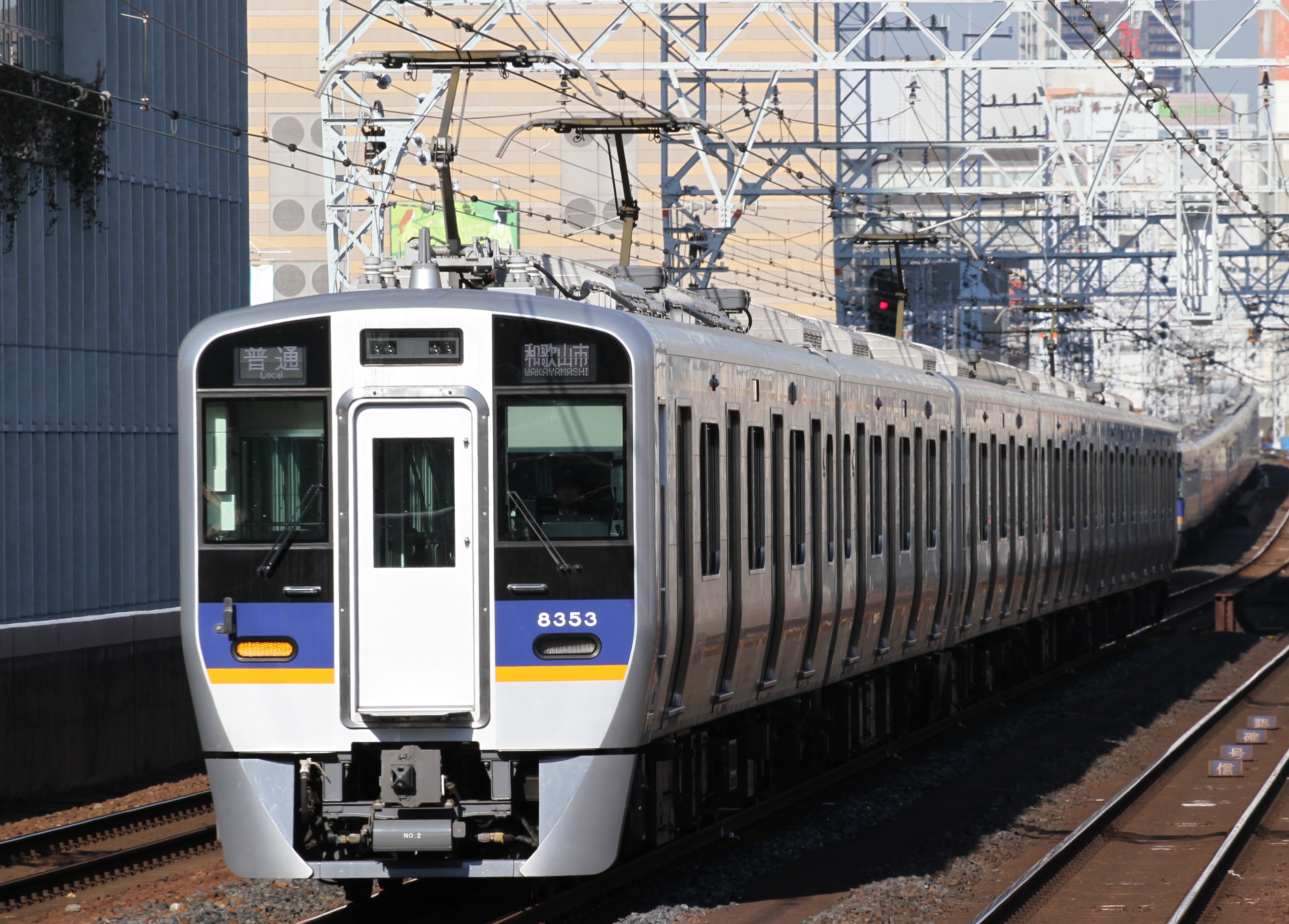Nankai 8300 Series on:
[Wikipedia]
[Google]
[Amazon]
The is an
File:NK8300 room.jpg, The interior of an 8300 series set in October 2016
File:NK8300 space.jpg, A luggage space inside an 8300 series set in October 2016
File:Nankai 8300 LCD.JPG, An LCD passenger information display inside an 8300 series set



Official press release
(25 March 2015) {{Nankai trainsets Electric multiple units of Japan Train-related introductions in 2015 Kinki Sharyo multiple units Nankai Electric Railway rolling stock 1500 V DC multiple units of Japan
electric multiple unit
An electric multiple unit or EMU is a multiple-unit train consisting of self-propelled carriages using electricity as the motive power. An EMU requires no separate locomotive, as electric traction motors are incorporated within one or a number ...
(EMU) commuter train type operated by the private railway
A private railway is a railroad run by a private business entity (usually a corporation but not need be), as opposed to a railroad run by a public sector.
Japan
In Japan, , commonly simply ''private railway'', refers to a public transit railway o ...
operator Nankai Electric Railway in Japan since 8 October 2015.
Operations
The 8300 series trains are used onNankai Main Line
The is one of the two main railway lines of Japanese private railway company Nankai Electric Railway, together with Kōya Line. The route is from Namba Station in south downtown of Osaka to Wakayamashi Station in Wakayama via Sakai, Izumi ...
, Nankai Wakayamakō Line
The is a railway line operated by Japanese private railway company Nankai Electric Railway that runs in Wakayama, Wakayama Prefecture, between and stations.
The purpose of the line is to provide a railway link to Wakayama Port that has ferry ...
, and Nankai Airport Line
The is a railway line operated by the Nankai Electric Railway, which connects Izumisano and Kansai International Airport and is owned by Kansai International Airport Co., Ltd. between Rinkū Town and Kansai Airport. It opened on June 15, 1994. ...
commuter services singly or coupled with 12000 series EMUs on Southern Premium limited express services to provide non-reserved accommodation.
Since 22 November 2019, 8300 series trains have been used on Koya Line
The is a railway line in Osaka Prefecture and Wakayama Prefecture, Japan, owned and operated by the Nankai Electric Railway, a private railway operator. It connects Osaka and Koyasan, the capital of the Japanese Buddhist sect Shingon, via the ...
services. Nankai expects to deploy additional 8300 series trains and replace the entirety of the 6000 series fleet on the Koya Line by 2023.
Formations
, the fleet consists of five four-car sets (8301 to 8305) and six two-car sets (8701 to 8706). Two-car trainsets were also delivered from July 2016.Four-car sets
The four-car sets are formed as follows, with two motored ("M") cars and two non-powered intermediate trailer ("T") cars. The motored cars each have one single-armpantograph
A pantograph (, from their original use for copying writing) is a mechanical linkage connected in a manner based on parallelograms so that the movement of one pen, in tracing an image, produces identical movements in a second pen. If a line dr ...
.
Two-car sets
The two-car sets are formed as follows, with one motored ("M") car and one non-powered trailer ("T") car. The motored cars each have two single-arm pantographs.Interior
Passenger accommodation consists of longitudinal seating withLED lighting
An LED lamp or LED light bulb is an electric light that produces light using light-emitting diodes (LEDs). LED lamps are significantly more energy-efficient than equivalent incandescent lamps
and can be significantly more efficient than mos ...
used throughout.
History
Details of the new trains were first announced officially by Nankai Electric Railway on 25 March 2015. The first two four-car sets, built byKinki Sharyo
is a Japanese manufacturer of railroad vehicles based in Osaka. It is an affiliate company of Kintetsu Corporation. In business since 1920 (as Tanaka Rolling Stock Works) and renamed The Kinki Sharyo Co., Ltd in 1945. They have produced light r ...
, were delivered in June 2015. The first train entered revenue service on 8 October 2015.
Six two-car sets were delivered from Kinki Sharyo in July and August 2016. These entered revenue service on 12 September 2016.
Fleet history
The individual build details for the fleet are as follows.Four-car sets


Two-car sets

References
External links
Official press release
(25 March 2015) {{Nankai trainsets Electric multiple units of Japan Train-related introductions in 2015 Kinki Sharyo multiple units Nankai Electric Railway rolling stock 1500 V DC multiple units of Japan